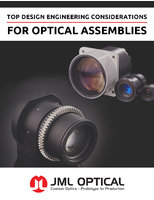Fatigue and Fracture Symposium issues call for papers.
Press Release Summary:
Scheduled for Nov 14, 2012, symposium on Fatigue and Fracture Metallic Medical Materials and Devices will provide updated set of presentations on mechanics principles as applied to fatigue, fracture, and life predictive methodologies involved in metallic medical materials. It will illustrate what techniques developed in past few years are now being applied to design and durability assessment of medical devices where fatigue initiation and crack propagation are of major concern.
Original Press Release:
Papers Are Invited for ASTM International Symposium on Fatigue and Fracture Metallic Medical Materials and Devices
W. CONSHOHOCKEN, Pa., -Papers are invited for the third symposium on Fatigue and Fracture Metallic Medical Materials and Devices, to be held Nov. 14, 2012, at the Hyatt Regency in Atlanta, Ga. Sponsored by ASTM International Committees E08 on Fatigue and Fracture and F04 on Medical and Surgical Materials and Devices, the symposium will be held in conjunction with the November standards development meetings of the committees.
The intent of this conference is to provide an updated set of presentations on fatigue and fracture mechanics principles as applied to the fatigue, fracture and life predictive methodologies involved in metallic medical materials, such as Nitinol, 304, 316L, MP35N, and other commonly used stainless steels as well as Ti-6-4, Co-Cr, etc. and devices such as peripheral stents, prosthetics, etc.
It is our intent to illustrate with up-to-date presentations, what fatigue and fracture mechanics techniques developed within the past few years are now being applied successfully to the design and durability assessment of medical devices where fatigue initiation and crack propagation is of major consideration. We will also be soliciting presentations that address the utility of existing and proposed fatigue and fracture mechanics standards in analyzing medical devices and fatigue initiation and propagation-based methods for interpreting cyclic stress and strain tensor data from computational analysis for fatigue life predictions and analysis. Finally, given the criticality of the data, we will be soliciting presentations on medical device patient's duty cycles and the corresponding patient's medical device boundary conditions.
To participate in the symposium, presenters/authors must submit a 250-300 word preliminary abstract no later than Feb. 6, 2012. The abstract must include a clear definition of the objective and approach of the work discussed, pointing out material that is new, and present sufficient details regarding results. The presentation and manuscript must not be of a commercial nature nor can it have been previously published. The symposium co-chairmen will notify you via postal mail by Feb. 20, 2012, of your paper's acceptability for presentation at the symposium.
Symposium presenters are required to submit their papers to the Selected Technical Paper (STP), an online and printed, peer-reviewed publication for the international scientific and engineering community. Manuscripts to be peer reviewed for the STP are due no later than Oct. 30, 2012.
For abstract submittal and other related information, visit http://www.astm.org/E08_Fatigue.htm.
Additional information is available from symposium co-chairmen: M.R. Mitchell, Northern Arizona University, Flagstaff, Ariz. (phone: 928-814-8622; michael.r.mitchell@nau.edu); Stephen W. Smith, NASA Langley Research Center, Hampton, Va. (phone: 757-864-8946; stephen.w.smith@nasa.gov); Terry Woods, U.S. Food and Drug Administration, Silver Springs, Md. (phone: 301-796-2503; terry.woods@fda.hhs.gov); or Brian Berg, Boston Scientific Corp., Saint Paul, Minn. (phone: 763-494-2677; bergb@bsci.com).
ASTM International is one of the largest international standards development and delivery systems in the world. ASTM International meets the World Trade Organization (WTO) principles for the development of international standards: coherence, consensus, development dimension, effectiveness, impartiality, openness, relevance and transparency. ASTM standards are accepted and used in research and development, product testing, quality systems and commercial transactions.




